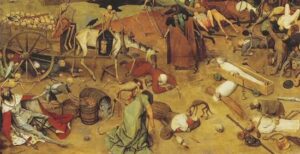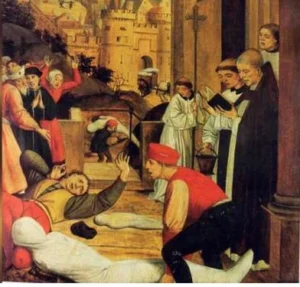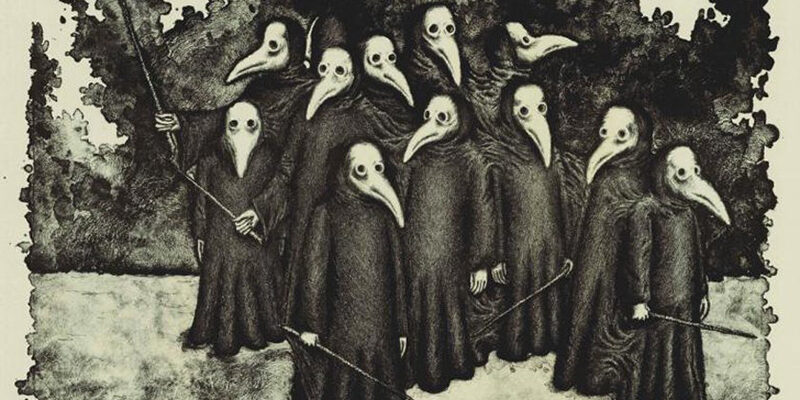The Bubonic Plague, also known as the Black Death, was one of the largest epidemics and had severe consequences during the Middle Ages. The plague is an infectious disease caused by the bacterium Yersinia pestis and is transmitted from person to person through contact with contaminated objects, primarily by fleas and other rodents.

Here are some key points about the bubonic plague in the Middle Ages:
- Pandemic: During the Middle Ages, the bubonic plague caused numerous major outbreaks across Europe, Asia, and Africa. These outbreaks resulted in high mortality rates among the population, severely affecting the lives and economies of various countries and territories.

- Poor nutrition: Poor living conditions and inadequate nutrition created a favorable environment for the spread of the plague. In particular, the lack of sanitation and overcrowding in cities and villages exacerbated the transmission of the bacteria.

-
Control measures: In the Middle Ages, knowledge of medicine and disease prevention was not as advanced as it is today. As a result, disease control measures were often very limited and typically included isolating and quarantining infected individuals, as well as simple hygiene practices.
-
Social and cultural impact: The bubonic plague caused significant social and cultural upheaval, affecting both the material and spiritual aspects of communities. The outbreaks led to a large population decline, instilling fear and increasing religious and supernatural beliefs as people sought protection and salvation.
Overall, the bubonic plague had a significant and lasting impact on the world during the Middle Ages, and it is considered an important part of medical and social history.

